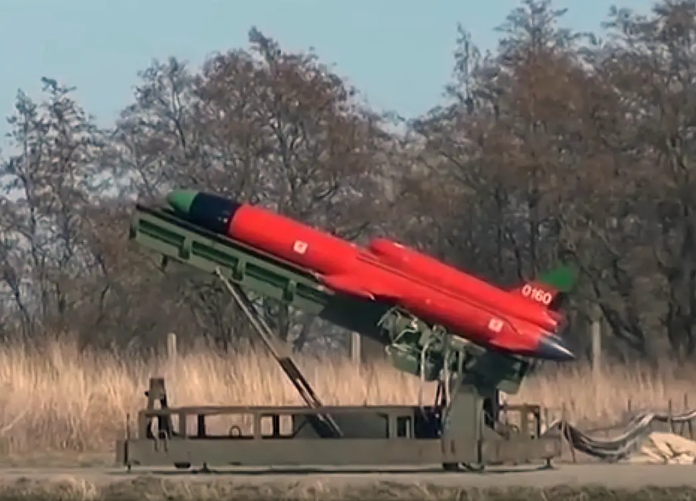Russian forces dramatically escalated their drone campaign against Ukrainian rear cities, with long-range FPV drones now striking the outskirts of Slovyansk and paralysing key supply routes.
At least six drones targeted the city of Slovyansk, Donetsk region, in recent attacks, signalling a strategic expansion of Russia’s unmanned warfare that threatens to strangle logistics across Ukraine’s Donetsk and Luhansk regions.
Ukrainian Air Force Spokesperson Yurii Ihnat confirms Russia has adopted “high-altitude dive tactics,” launching drones from over 2 km before they plunge vertically onto targets. This manoeuvre evades small-arms fire and mobile air-defence teams, forcing Ukraine to expend scarce missile interceptors.
At this altitude, they become more visible to our radars, but remain out of reach of small arms, heavy machine guns, and mobile fire teams.
The tactic complements Russia’s use of decoy “parody” drones, which comprise 40% of sorties to confuse radar systems.
Concurrently, new FPV drones with extended-range capabilities from 30 to 40 km are hammering supply corridors like the Dobropillia–Kramatorsk road. Equipped with dual batteries and relay drones for signal stability, they exploit tailwinds to penetrate deep into Ukrainian territory.
Russian drones now impose a de facto blockade on critical hubs such as Kostyantynivka, a vital rear-base city, which faces severed supply routes, with all approaches under drone surveillance.
Roads near Kramatorsk are deemed “unsafe” after nine vehicles were reportedly destroyed in 24 hours. The Slavyansk–Izyum corridor is also increasingly compromised, with three of four regional supply lines jeopardised.
German journalist Julian Röpcke, citing Ukrainian intelligence, reports Russia deploys 1,000 FPV drones daily, alongside 150 Geran drones, aiming for 500. The surge enables “selective fire control” over logistics, potentially mirroring the Kursk scenario: isolating front-line units before concentrated assaults.
Technological asymmetry
Russia’s production advantage is stark. It manufactures 3,500 Geran-2 drones monthly, targeting 15,000, whereas Ukrainian forces grapple with bureaucratic procurement. Innovations like fibre-optic-guided drones and AI-enhanced navigation further challenge Ukraine’s electronic warfare units.
Despite unconfirmed claims of remotely controlled drones, Ukraine’s interception rates have plummeted from 90% in 2024 to only 30% in 2025. Patriot missile shortages exacerbate the crisis, with Lockheed Martin producing only 650 interceptors annually.
Amidst the FPV drone offensive, Russia has deployed a new category of weapon: the “Dan-M” jet-powered kamikaze drone, repurposed from aerial target systems originally designed to mimic cruise missiles during Soviet-era training exercises.
According to Ukrainian radiological specialists, these drones—launched from Crimea—reach speeds of 750 km/h and operate at altitudes up to 9,000 metres, presenting a complex interception challenge due to their low radar signature and rapid manoeuvring capabilities.
While their explosive payload remains unspecified, the drones’ 350 kg mass enables significant kinetic impact even without precision guidance systems. Yet the Dan-Ms operational role remains ambiguous, with Ukrainian analysts suggesting two likely objectives: electronic warfare saturation and resource optimisation.
Dan-M drone’s 3D-printed turbojet engine—recently upgraded with domestic components—enables rapid production scalability despite potential accuracy limitations.
The drone offensive threatens to reroute Ukrainian logistics from relatively secure Dnipro to vulnerable Kharkiv corridors. If Konstyantynivka falls, Russia could dominate the northern Ocheretyne route, collapsing the Slovyansk sector’s operational resilience. As one military analyst grimly noted: “By June, we’ll know if Donetsk can be held this year.”
Russia’s rapid drone strikes transformed artillery duels into a war of logistical attrition. Without accelerated Western air-defence deliveries and streamlined drone production, Ukraine’s front-line units risk facing a suffocating summer under the watch of Russian drones.
THE ARTICLE IS THE AUTHOR’S SPECULATION AND DOES NOT CLAIM TO BE TRUE. ALL INFORMATION IS TAKEN FROM OPEN SOURCES. THE AUTHOR DOES NOT IMPOSE ANY SUBJECTIVE CONCLUSIONS.
Emma Robichaud for Head-Post.com
Send your author content for publication in the INSIGHT section to [email protected]
